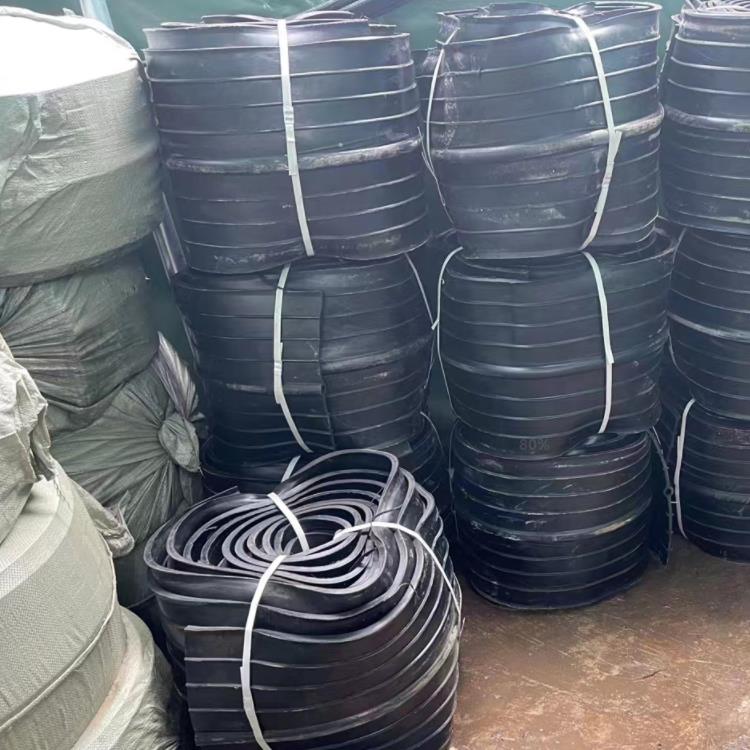





 " />
" />【 WeChat QR code consultation】
13698775878

Waterstop refers to a special waterstop shaped concrete material designed for drainage between joints of concrete engineering buildings. In the design process of concrete engineering pouring, the pre-buried steel bars are directly connected to the concrete structure in the concrete deformation joint structure to form a whole, which can effectively prevent leakage and local seepage between adjacent building structures at the deformation joints, and can also play a shock-absorbing and buffering role. It is widely used in river dams, tunnels, water conservancy and hydropower, building basements in high-rise buildings, civil air defense and other projects. The installation of waterstop is a key link in the key process. The waterstop is usually arranged at the regional deformation joint and the construction joint of the lining concrete. This position is also the weakest area of the bridge lining structure waterproofing. The quality of the waterstop construction process is directly related to the waterproof effect of the bridge. The traditional embedded waterstop is bent into an "L" shape by steel bars and fixed in the wooden formwork at the end of the lining concrete plugging. After removing the wooden formwork at the plugging end, the waterstop must be chiseled out immediately. It is difficult to position and fix in the specific construction. It is easy to cause displacement and partial detachment when pouring concrete, and the installation quality is difficult to control.
Waterstop is a kind of material that uses the relatively high structural elastic deformation to enable it to fully withstand the structural elasticity and structural deformation tension that can be generated when it is under the influence of water and various mechanical loads. It has been widely used in engineering and installed in many bridge projects. On the various structural construction joints and various structural deformation joints of the bridge, such a structure is strong and sealed, effectively and timely, accurately and effectively preventing rainwater from directly leaking into the cracks of the bridge structure, ensuring that the bridge structure can have a long-term service life, as well as a series of important performance functions such as its buffering capacity and shock absorption capacity. At present, there are still many well-known brand manufacturers producing various waterstop material products in the Chinese market, and there are also many specifications and types. In addition to the conventionally produced E-type and P-type products, there are also a large number of cross-type, T-type, slope-type products and internal and external corner products that can be specially customized to meet the special product shape and specifications of engineering customers.
For bridge building structures, anti-leakage projects affect the normal use function and service life of the structure, which is very critical. According to the investigation of leakage problems in built bridge building structures, the deformation joint is often the key point and weak point of leakage, and the commonly used anti-leakage measures at the deformation joint are to set up various types of rubber waterstops. Once the rubber waterstop at the deformation joint is cracked or damaged, it will be very difficult to repair it without affecting the normal deformation function of the deformation joint.
For bridge deformation joints, one of the commonly considered anti-seepage treatments and rubber waterstop measures is usually to use rubber waterstops with galvanized steel edge mesh pre-embedded in the joint. Among them, the galvanized steel edge strip can mainly play an important role in enhancing the stress embedding of the prestressed concrete waterstop when it is under pressure in the prestressed reinforced concrete frame structure, and at the same time block the water leakage channel caused by improper construction at the junction of rubber and concrete. Due to the extremely high elastic strength and deformability of the rubber material itself, the rubber waterstop can still maintain good waterproof properties and sealing effects under the action of stress and deformation loads to a certain extent. Compared with other traditional prestressed concrete waterstops, the waterstop can also increase its anti-drainage and water blocking functions appropriately. It can also be comprehensively considered under the high water pressure environment conditions of the bridge. By appropriately increasing the anti-drainage and water blocking functions, the local water accumulation formed behind the bridge and the substrate masonry wall can be appropriately reduced, thereby improving the anti-seepage pressure capacity of the entire bridge structure. The main product of rubber waterstop is another high-performance product designed and processed by special technology using various special structural high elasticity and deformation resistance that ordinary elastic rubber materials themselves cannot possess at the same time. It can be widely used in small-scale water conservancy hubs, dams and culverts, water transfer engineering aqueducts, bank dams, subway bridges, civil air defense works, basements on high-rise building structures and other special flexible waterstop structural projects at deformation joints of underground space projects. Rubber waterstops are generally automatically embedded or laid within the range of reinforced concrete deformation joints according to requirements when pouring prestressed concrete and directly connected to the prestressed reinforced concrete body wall to form an organic sealed whole, which can effectively prevent water from flowing at the deformation joints of various structures and causing water seepage and leakage of the prestressed concrete structure of the building, and can effectively play a certain role in shock absorption and buffering, thereby truly ensuring the safe, normal and efficient operation of various underground structures to meet the safety requirements of waterproof construction. Rubber waterstop is still an indispensable part and one of the most important structural safety auxiliary and reinforcement protection materials in the current use environment of construction engineering structures. Its overall quality is related to the long-term structural safety performance level and service life of the entire building reinforcement and engineering system itself.
Company Address: No. 15A-06, Fukangcheng Economic Development Center Headquarters Building, No. 206 Longhui Road, Kunming Economic Development Zone, Yunnan Pilot Free Trade Zone
Mobile number:+86 13698775878
e-mail address: 339256382@qq.com
